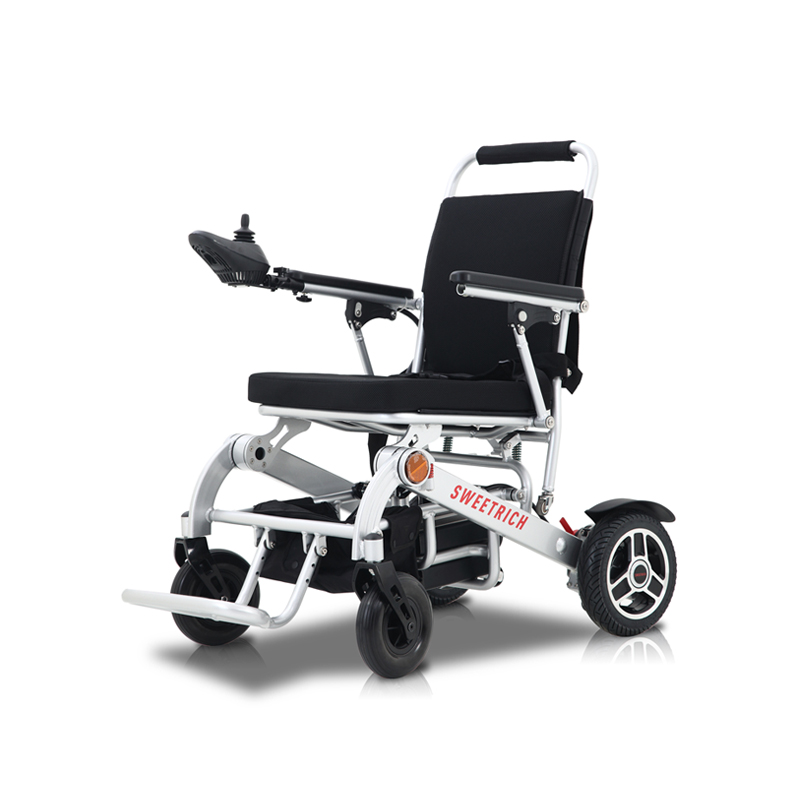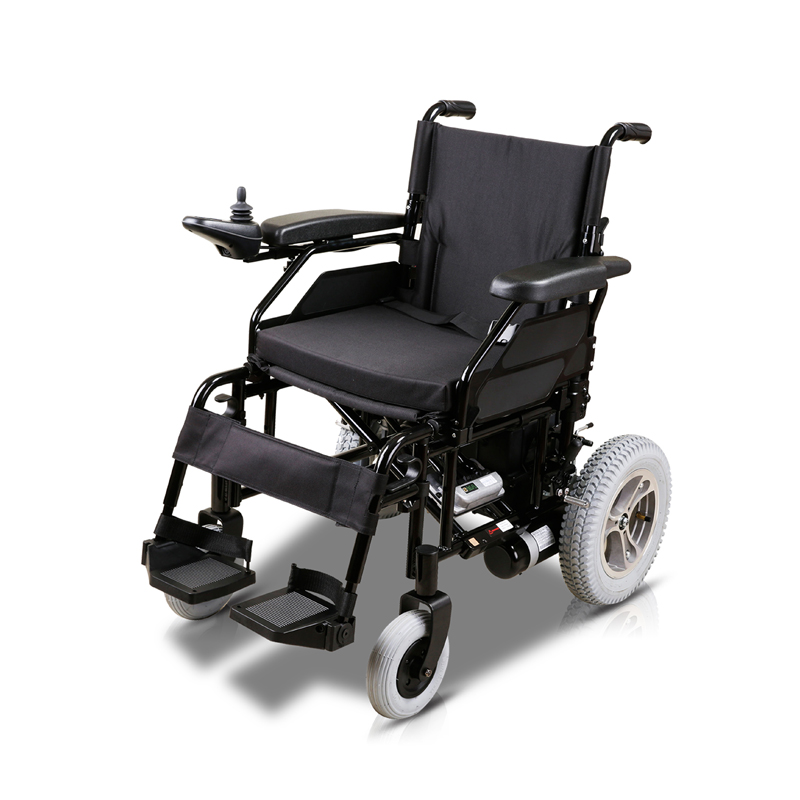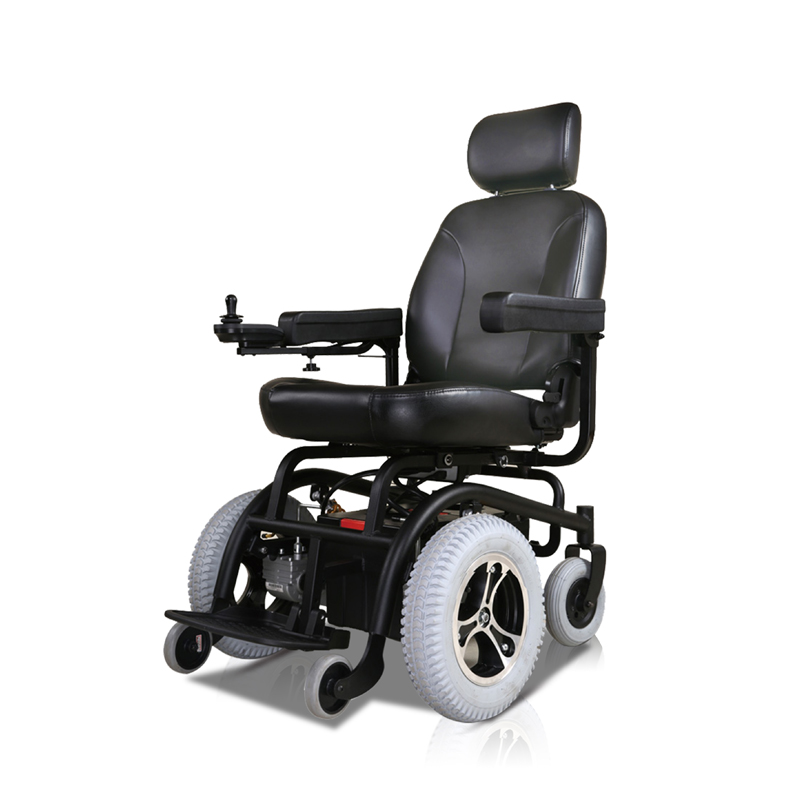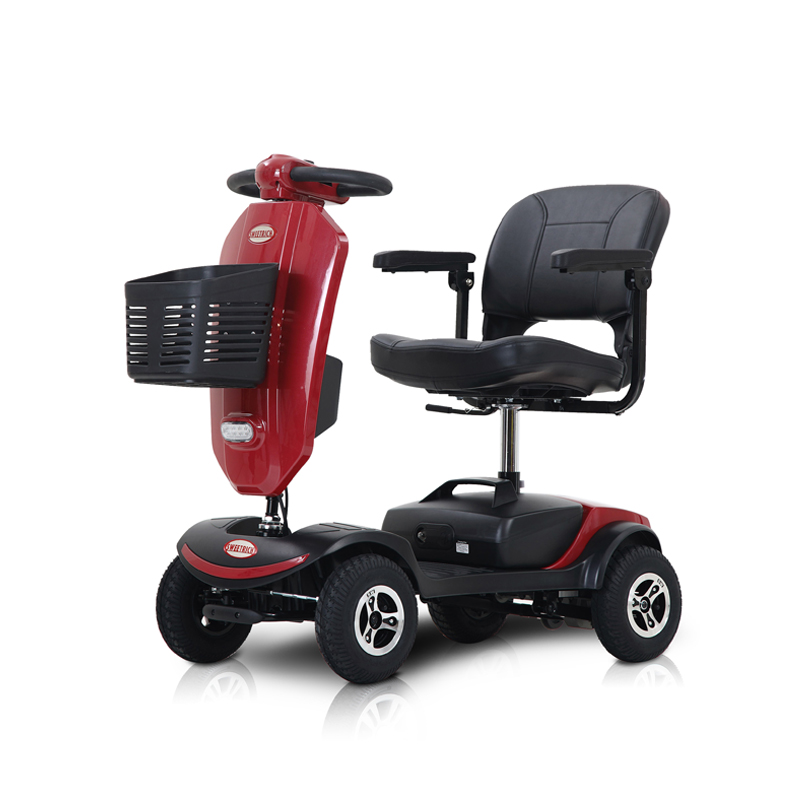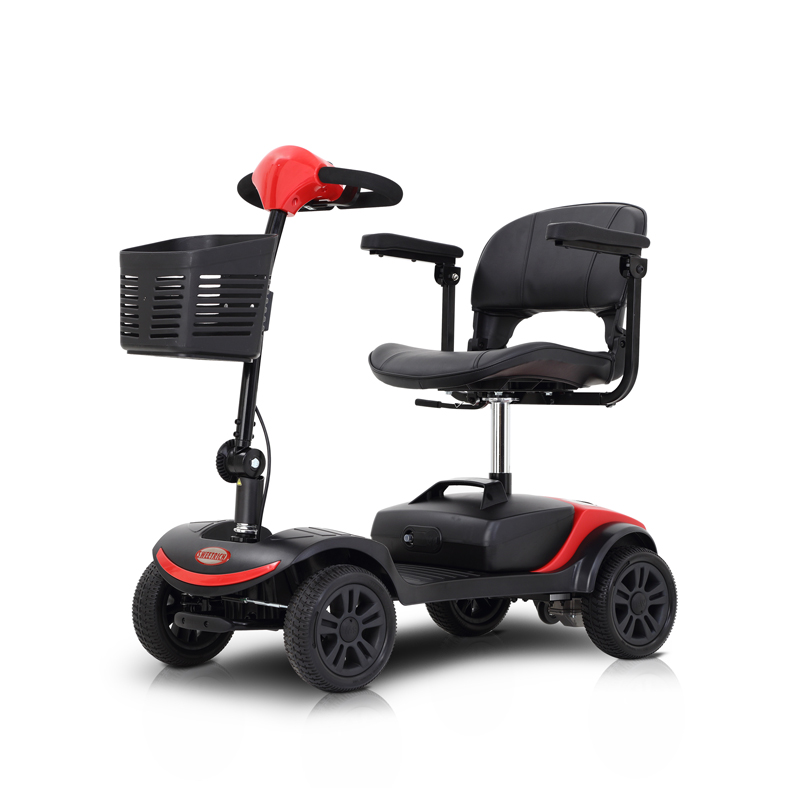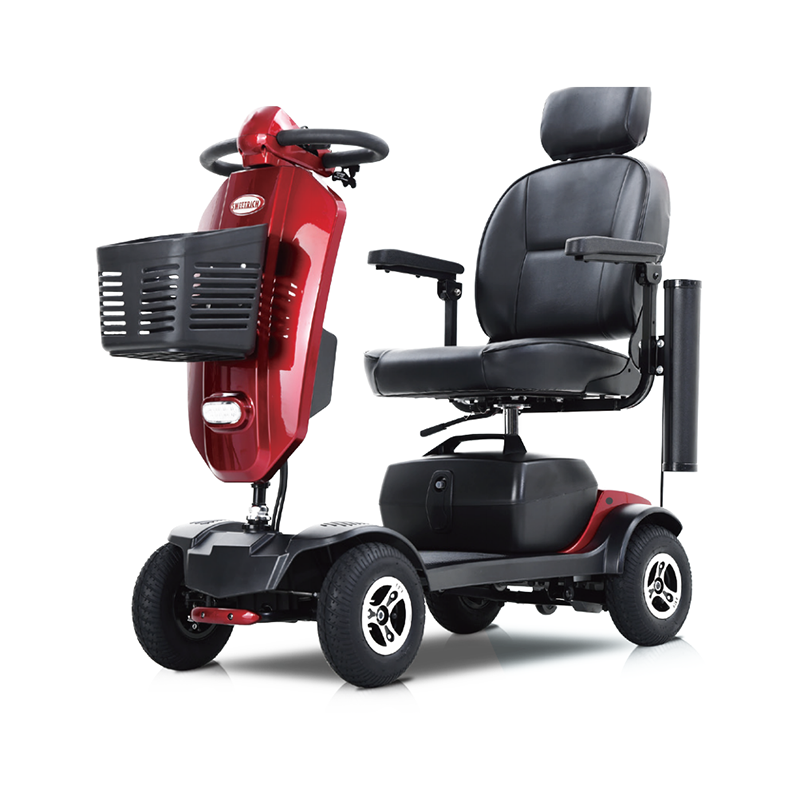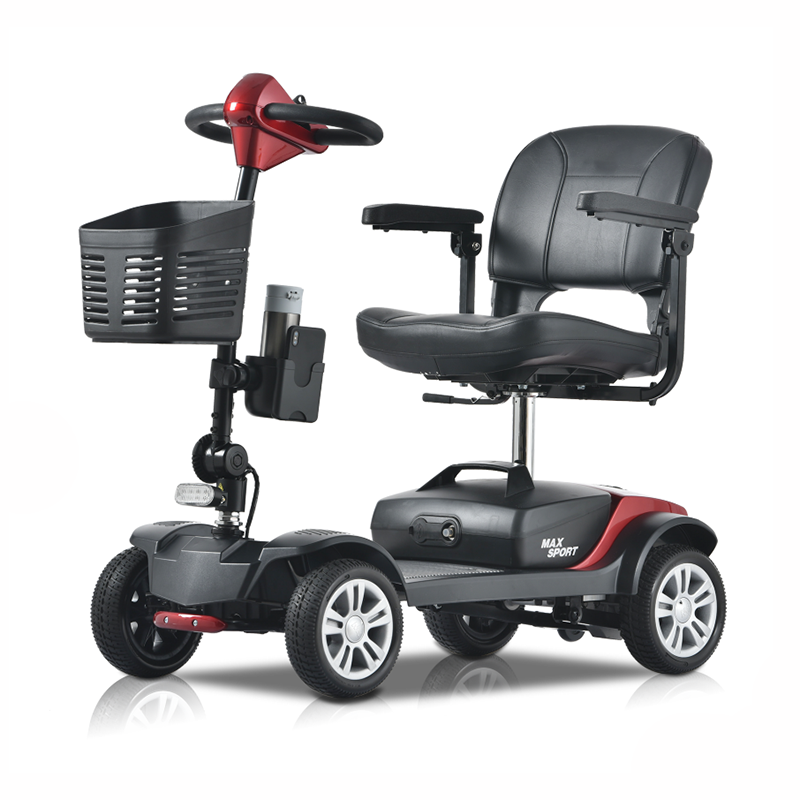1. Design: the art of structural optimization
The design of electric wheelchairs is the basis of steering flexibility. Excellent design should not only consider the comfort and safety of users, but also the maneuverability and stability of the vehicle. In order to achieve precise steering, electric wheelchairs usually adopt a front-wheel or two-wheel differential drive design, which allows the wheelchair to achieve smooth steering action by adjusting the speed difference of the wheels on both sides when turning. In addition, the wheelbase, track width and center of gravity distribution of the wheelchair are also carefully calculated to ensure that it can remain stable when turning and is not easy to roll over.
Modern electric wheelchairs also tend to use lightweight materials such as aluminum alloy or carbon fiber to reduce the weight of the whole vehicle, which not only reduces the user's operating burden, but also improves the response speed and flexibility of the wheelchair. At the same time, the compact folding design makes the electric wheelchair easy to carry and store when not in use, further broadening its usage scenarios.
2. Motor performance: efficient and precise source of power
The motor is the heart of the electric wheelchair, and its performance directly determines the power output and steering accuracy of the wheelchair. Modern electric wheelchairs generally use brushless DC motors (BLDC), which have the advantages of high efficiency, low noise, simple maintenance, etc., and can provide smooth and continuous power output. More importantly, through advanced motor control technologies, such as vector control or direct torque control, precise adjustment of motor speed and torque can be achieved, thereby achieving fast response and delicate control during steering.
Some high-end electric wheelchairs are also equipped with intelligent power systems, which can automatically adjust power output according to the user's driving habits and road conditions, ensuring sufficient power reserves to cope with complex terrain and achieving energy saving and power saving in daily use.
3. Control system: a combination of intelligence and humanization
The control system is the soul of the steering flexibility of electric wheelchairs. Modern electric wheelchairs generally use advanced electronic control systems, which integrate sensor technology, microprocessor technology and wireless communication technology, so that the wheelchair can be precisely operated according to the user's instructions. Users can control the steering of the wheelchair in a variety of ways, such as joysticks, buttons or remote controls. These control methods are not only intuitive and easy to learn, but also provide a variety of driving modes for users to choose, such as standard mode, sports mode and economic mode, to meet the needs of different scenarios.
More advanced is that some electric wheelchairs are also equipped with intelligent navigation systems that can use GPS and map data to plan the best path and even have obstacle avoidance functions, greatly improving the safety and convenience of travel. In addition, through Bluetooth or Wi-Fi connection to smartphone APP, users can also remotely monitor the status of the wheelchair, adjust settings or perform fault diagnosis, and enjoy a more intelligent travel experience.


